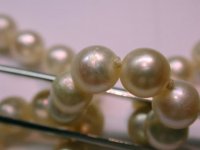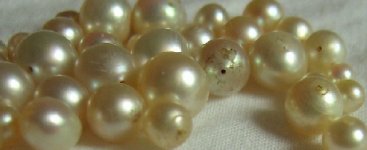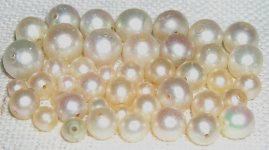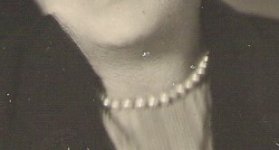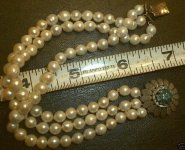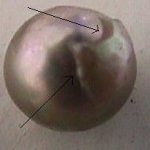I was lucky enougth to have a granddad who owned a pearling dhow that sailed the Persain Gulf around Bahrain. The pearls I showed you were from there. While i did hear of an famous pearl pealer in Bahrain, he was old when I was a kid in the 1950's.
I know of no one living who can be called an expert in the art of pearl pealing, which even among the Bahraini pearlman of a bygone age, was a very rare art. Maybe someone else here has heard of such a person, but no one living has yet been mentioned here, yet.
I googled the subject casually and found nothing, not even historical references.
I did a search on this site and found some old Aramco magazine articles about the persian gulf pearlmen. I think we have 2 or 3 of these articles on the site. One mentions the old master of Bahrain.
The reason I showed you my natural Bahraini pearls was to show you the kind of natural pealing that can take place as they are worn. The different layers can hardly be seen after some wear to them. They need magnification to be seen.
Your picture was not all that good so I could not see how thick the layers of cracking are. If they are thick chunks, .5cc and up, the pealed pearl will be considerably smaller in diameter when done.
I wish you luck in your hunt. I hope someone here or elsewhere knows of a pearl pealer for you. I also hope you will allow the pearls to rehydrate slowly in a humid place. Thrn, if you can't find a pealer, you will still see some improvement in the skins of your pearls, maybe even enough improvement so you won't need a pealer.

